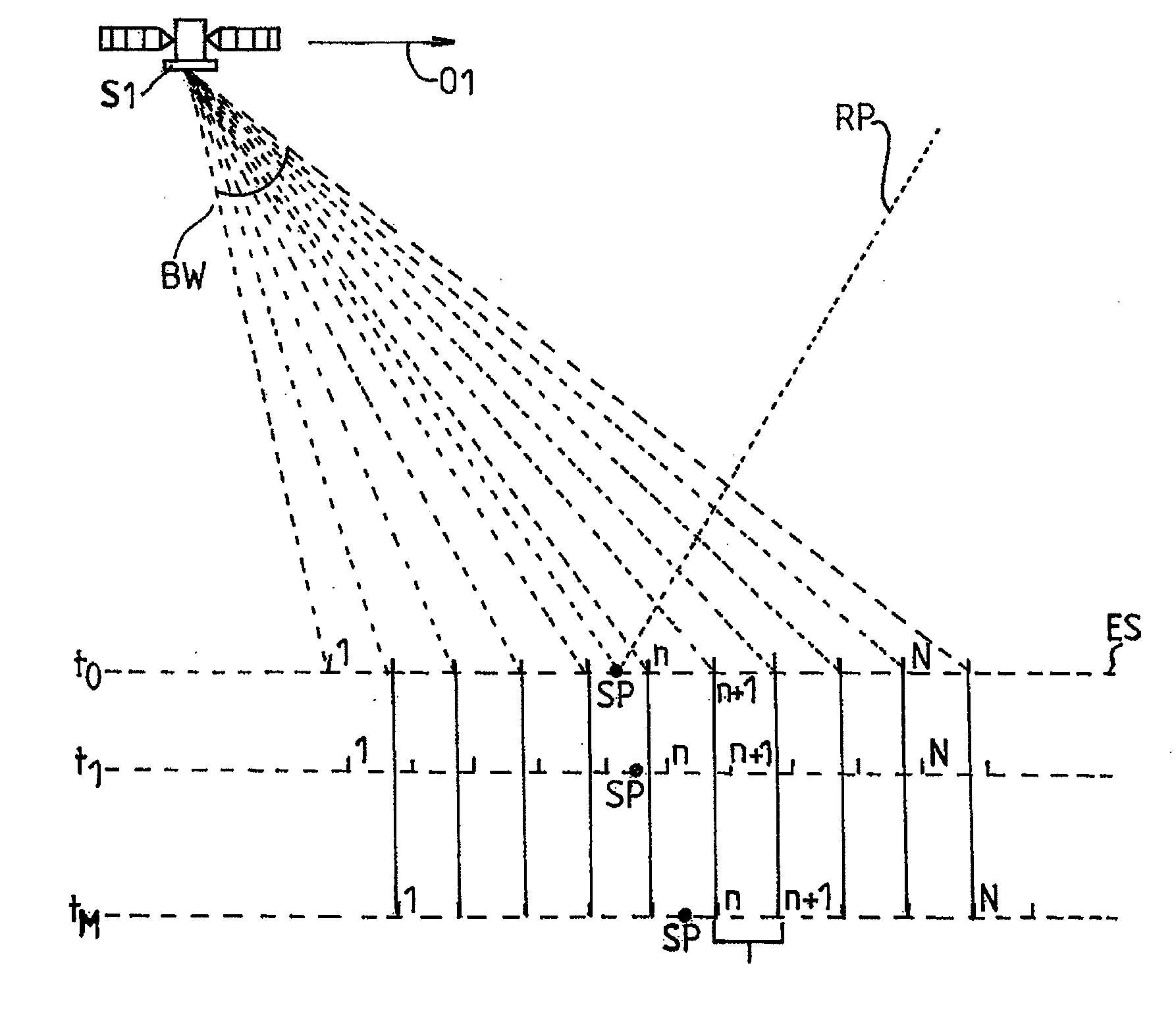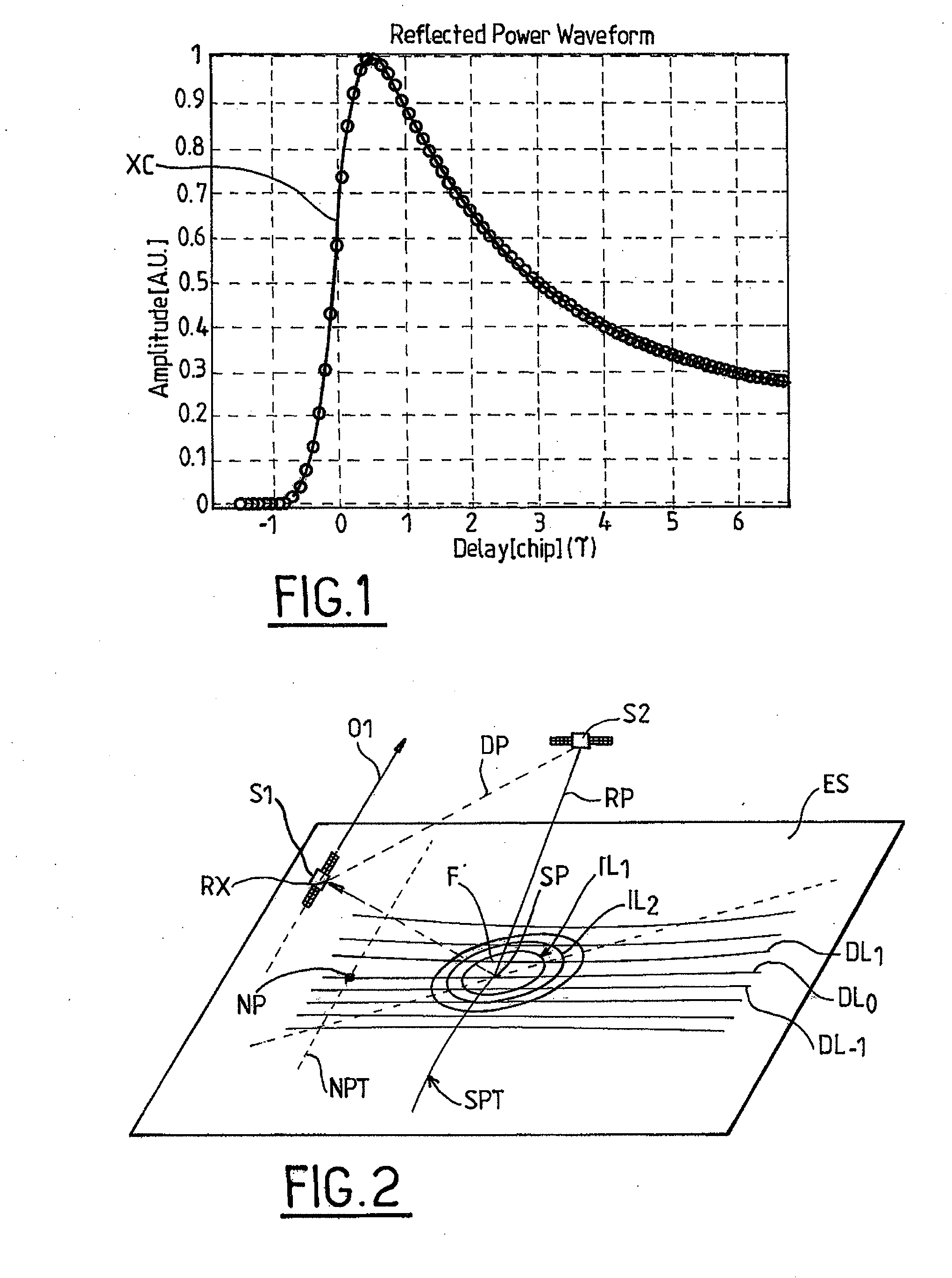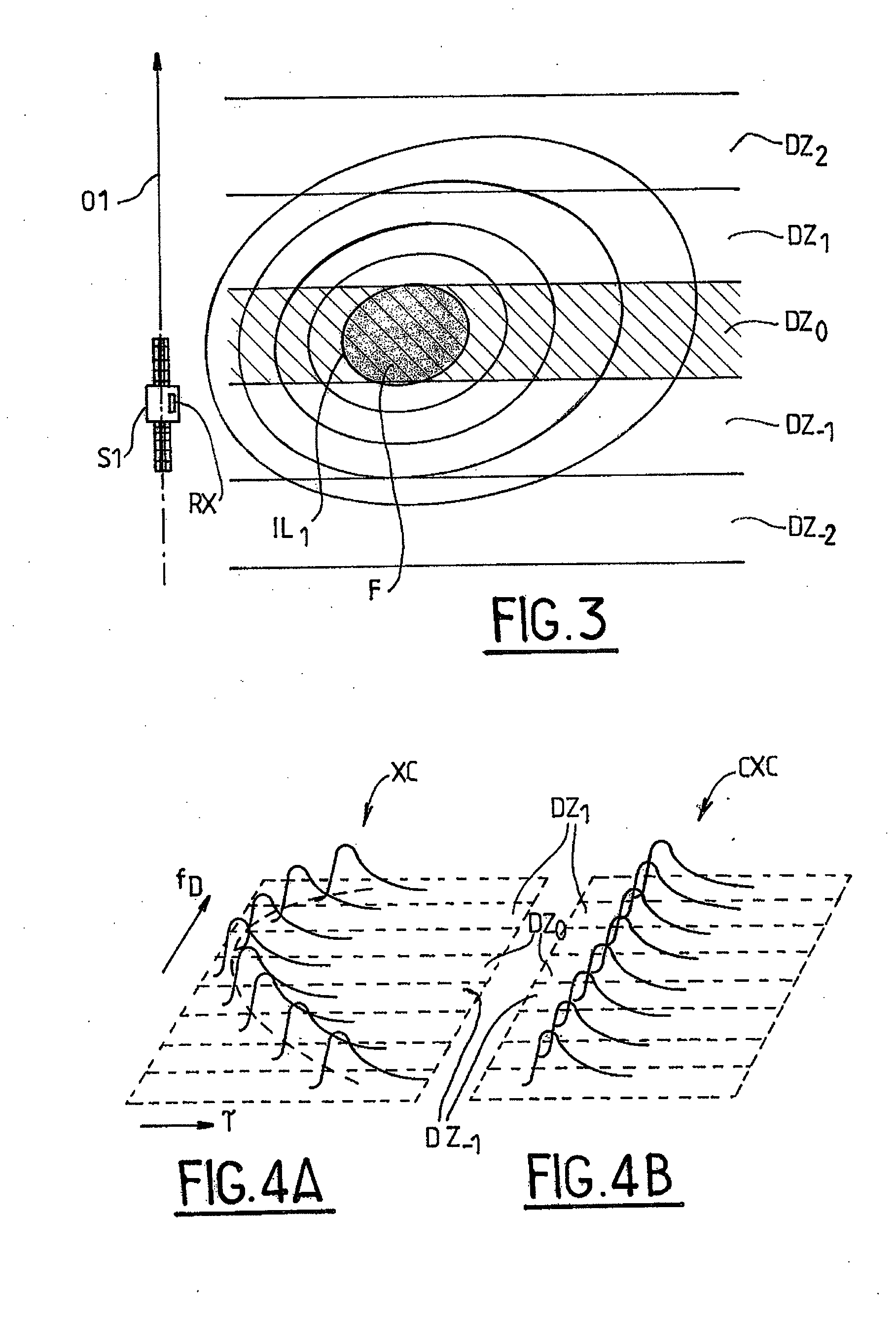Altimetry method and system
a delay-doppler and altimetry technology, applied in direction finders using radio waves, instruments, reradiation, etc., can solve the problems of complex application of delay-doppler curvature compensation to a paris-like passive bistatic altimetry technique, and requires specific adaptation
- Summary
- Abstract
- Description
- Claims
- Application Information
AI Technical Summary
Benefits of technology
Problems solved by technology
Method used
Image
Examples
Embodiment Construction
[0033]In order to estimate the height of a target point SP on the surface of the Earth with respect to a reference ellipsoid, a PARIS altimeter computes the cross-correlation of a known replica of the navigation code with the received navigation code pulses reflected / scattered off the surface of the Earth; the target point SP (called specular reflection point) is defined as the point of the Earth surface which reflects specularly the navigation code pulses received by the altimeter. FIG. 1 represents a typical PARIS cross-correlation waveform (XC) for a spread-spectrum GNSS signal such a GPS signal. As in conventional radar altimetry, the distance between the space-borne receiver and the reflecting point on the Earth surface—and therefore the elevation of said reflecting point—is determined by estimating the half power point HP on the rising edge of the waveform XC.
[0034]Indeed, computing the cross-correlation of the reflected GNSS signal with a locally generated replica thereof yie...
PUM
 Login to View More
Login to View More Abstract
Description
Claims
Application Information
 Login to View More
Login to View More - R&D
- Intellectual Property
- Life Sciences
- Materials
- Tech Scout
- Unparalleled Data Quality
- Higher Quality Content
- 60% Fewer Hallucinations
Browse by: Latest US Patents, China's latest patents, Technical Efficacy Thesaurus, Application Domain, Technology Topic, Popular Technical Reports.
© 2025 PatSnap. All rights reserved.Legal|Privacy policy|Modern Slavery Act Transparency Statement|Sitemap|About US| Contact US: help@patsnap.com



